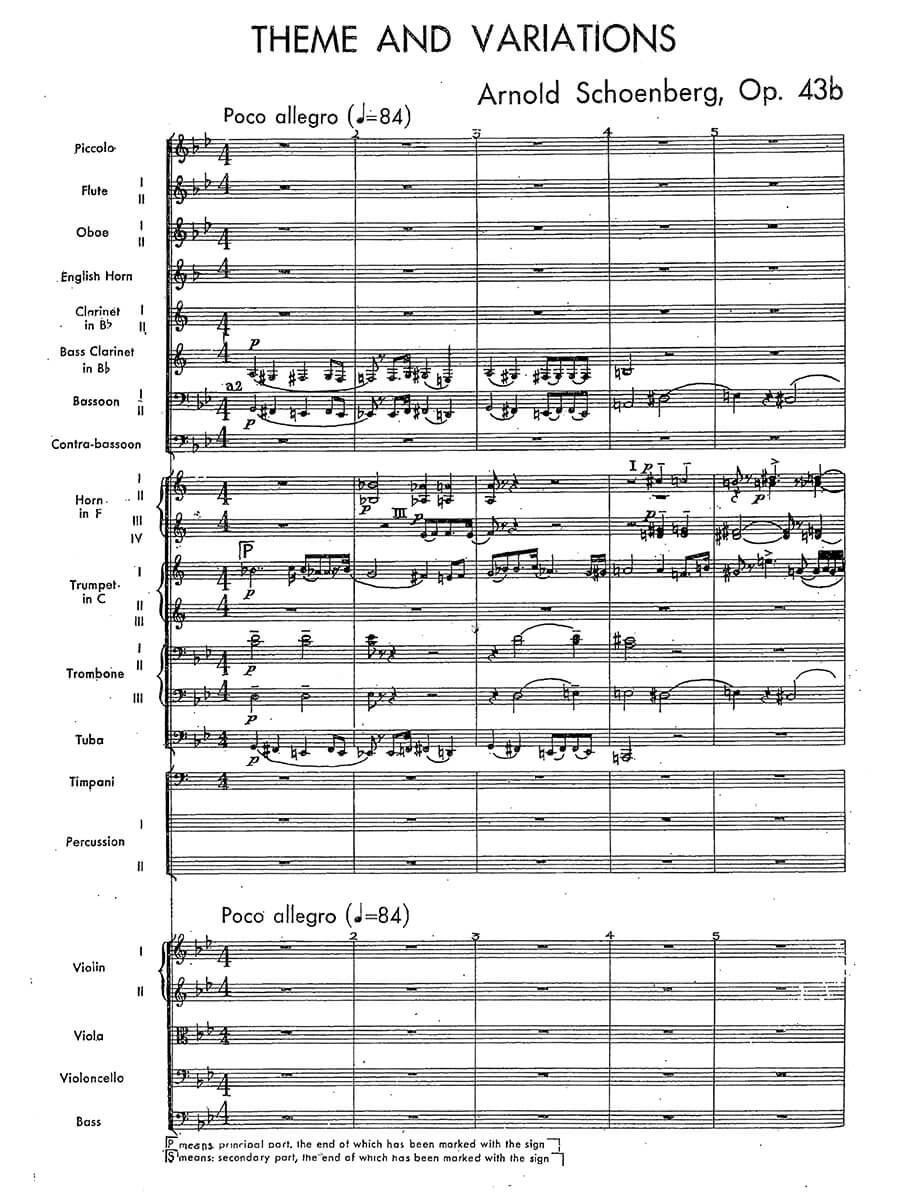Theme and Variations Op.43b for orchestra
Schönberg, Arnold
23,00 €
Arnold Schoenberg (Schönberg) – Theme and Variations for Orchestra, Op. 43b
(b. Vienna, 13 September 1874 – d. Los Angeles, 13 July 1951)
“. . . and I think I can prove it – technically this is a masterwork.
And I believe it is also original, and I know it is inspired.”
(Arnold Schoenberg; letter to the conductor Fritz Reiner1)
Preface
At the age of 59, Arnold Schoenberg was regarded by many as one of the leading and most innovative composers of the twentieth century. That year, 1933, amidst mounting antisemitism, he left Germany and sailed for the USA, arriving in New York on October 31. The U.S. proved a haven only to a limited extent. The first year in his adopted country was a particularly trying one. His acceptance of an offer of employment from the Malkin Conservatory, a newly established music school in Boston, had been the prime motivation for his decision to emigrate. The situation proved disappointing, however. The institution was poorly equipped, with only a few registered students. A satellite campus in New York necessitated a taxing weekly commute by rail. The cold, damp New England weather played havoc with his health, and he became seriously ill. After a year he moved to California for a climate much more suited to his constitution.
Although not technically a refugee, he had fled not only virulent antisemitism in Germany, but had lost a major source of income there after his teaching activities had been curtailed. Once located on the west coast, his financial situation remained precarious. As a composer, dependent to some extent, on income from new works, Schoenberg had every incentive to grasp at the few opportunities to come his way suited to his talents and inclinations. One such was an approach from Martin Bernstein, a professor at New York University, concerning the dearth of good music for college-level string orchestras. The idea of composing music which would “lay the foundations of a new artistic culture” appealed to Schoenberg. Thus, the germ for the Suite for String Orchestra, his first composition in the New World, was set. It emerged as a composition in five movements styled on old Baroque dance forms and was the first by Schoenberg to employ a key signature since 1907. In truth, though, it turned out to be somewhat more challenging for its intended purpose than originally intended! …
Read full preface / Das ganze Vorwort lesen> HERE
| Score No. | |
|---|---|
| Edition | |
| Genre | |
| Size | |
| Printing | |
| Pages |
